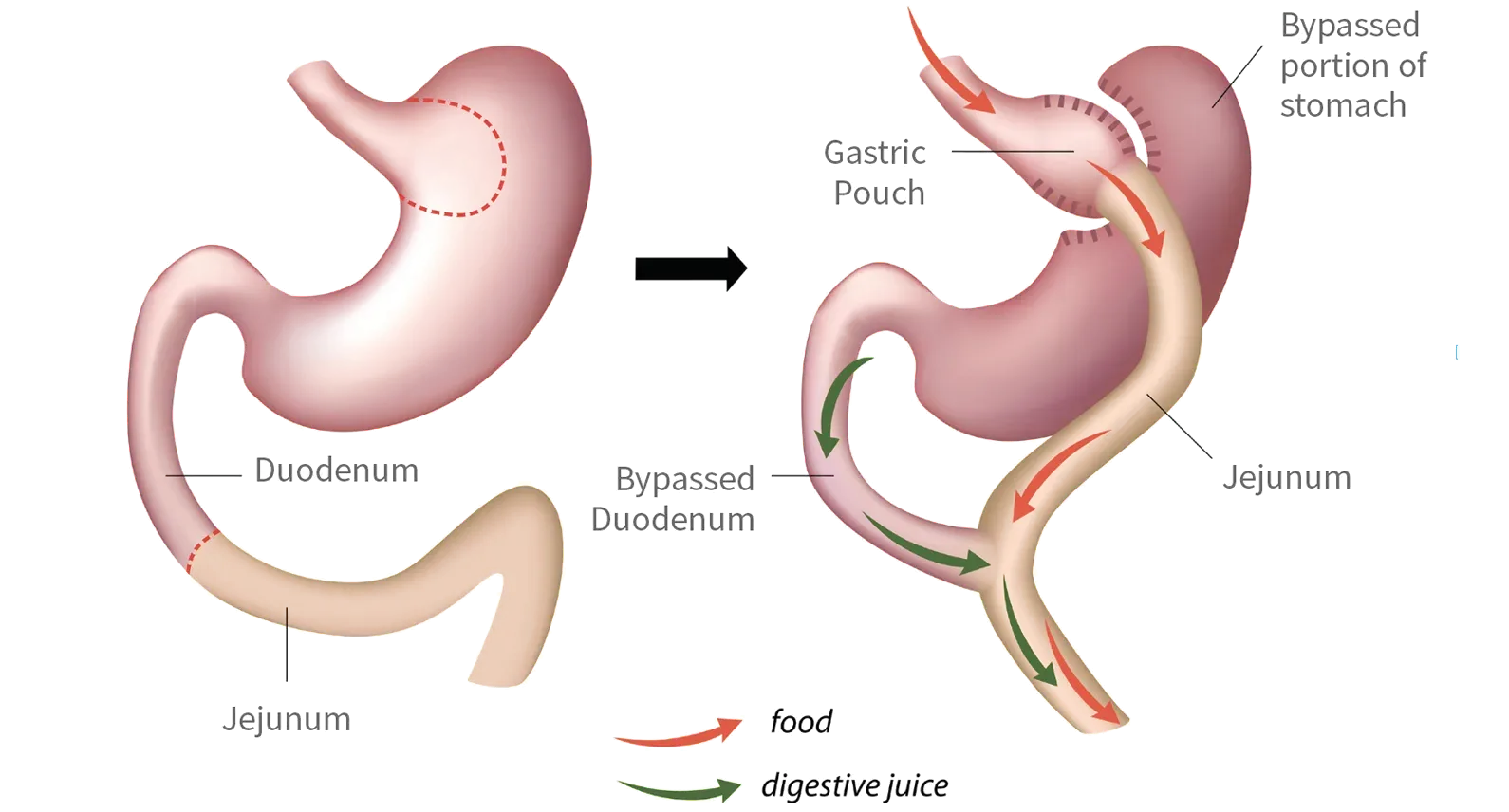Roux-en-Y gastric bypass surgery
This procedure is regarded internationally as the ‘gold standard’. Follow up for 15 years after surgery has shown patients maintain weight loss after roux-en-y gastric bypass surgery. This operation is usually done laparoscopically (using minimally invasive keyhole surgery).
The stomach and about one metre of the small intestine are bypassed. This restricts food intake and stimulates hormones in the gut that suppress hunger and improve diabetes if present.
Roux-en-Y gastric bypass surgery is explained in more detail in our patient information booklet, available in our exclusive Patient Portal.

Pros of Roux-en-Y gastric bypass surgery
- Small stomach pouch and hormonal effect produce strong sensation of fullness with very small meals
- Excellent weight loss in most patients, sustained long-term
- ‘Dumping’ syndrome makes it harder to cheat by eating sweets
Cons of Roux-en-Y gastric bypass surgery
- Leaks from staple lines and joins
- Ulcers, particularly in smokers
- Small risk of intestinal blockage
- Life-long vitamin supplements required

